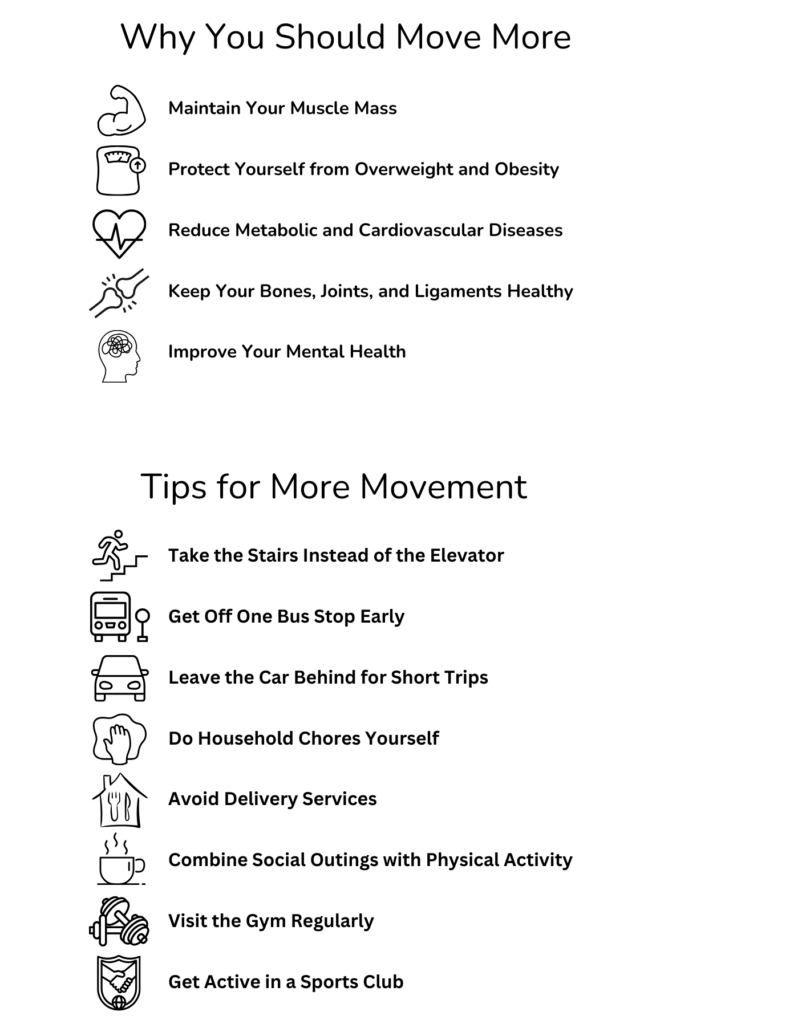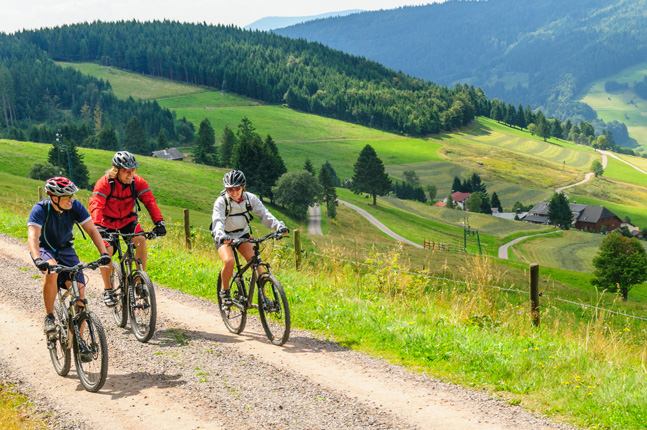
Major points
- Movement is essential for humans. It feels good and reduces the risk of metabolic and cardiovascular diseases.
- Many people find it difficult to regularly go to the gym or train in a sports club. Everyday movement is easier to implement.
- Find out how one Neatic member managed to integrate movement into their daily life.
Everyone is different. Some people exercise several times a week and cannot imagine life without their favorite physical activity. Others feel sore just thinking about exercising. A small cloud in the sky might be reason enough to stay inside because it could rain. For others, it is natural to walk or cycle for shorter distances.
Movement is important. If you enjoy going to the gym or playing sports in a club, that is great! However, if you are not a fan of traditional sports but want to increase your movement in daily life, keep reading.
Why should you increase your daily movement?
- Maintain your muscle mass: Without regular movement, muscle mass decreases. This can happen quickly. For example, when a broken arm is in a cast for 4 to 6 weeks, it will be slimmer and have less muscle than before the injury. A few weeks of movement can rebuild lost muscle mass.
- Protect yourself from overweight and obesity: A lack of movement increases the risk of overweight and obesity. Movement burns energy, and the body requires less energy when inactive.
- Reduce metabolic and cardiovascular diseases: A lack of movement increases the risk of conditions such as type 2 diabetes, high cholesterol, hypertension, heart attacks, and strokes.
- Keep your bones, joints, and ligaments healthy: Regular movement benefits your bones, joints, ligaments, tendons, and spinal discs. Studies show that movement reduces the risk of osteoporosis.
- Improve your mental health: Regular movement also has a positive impact on mental health, lowering the risk of depression and anxiety.

How much movement is beneficial?
The World Health Organization (WHO) recommends that adults engage in 150 minutes (2.5 hours) of moderate physical activity or 75 minutes (1.25 hours) of intense physical activity per week, along with muscle-strengthening exercises on at least two days.
Another approach is to match your daily movement time to your private screen time. Track the time you spend on non-work-related activities, such as watching TV or using smartphones, and try to match it with the amount of time spent moving. You may be shocked by how high your screen time is and how little time you spend moving. Work toward reducing screen time and increasing movement.

Tips for increasing daily movement
The idea is: “Every movement counts.” Many modern inventions encourage inactivity, so you must often overcome your “inner couch potato” to keep moving. Here are some helpful tips:
- Take the stairs instead of the elevator: It may seem silly, but stairs are great for increasing movement. If it is too hard to take all the stairs at once, give your body time to adjust and gradually increase your activity.
- Get off one bus stop early: Depending on how far apart the stops are, getting off one stop earlier can add several hundred steps to your day.
- Leave the car behind for short trips: Walk or cycle for short trips, such as going to the post office or pharmacy.
- Do household chores yourself: Many chores involve movement, such as vacuuming or mopping. Doing them manually, rather than relying on automated devices, can increase your movement and save money.
- Avoid delivery services: Shopping in person brings valuable movement into your day. Collecting parcels from a nearby store or locker also adds steps.
- Combine social outings with physical activity: Suggest a walk in the park before meeting friends at a café.
- Visit the gym regularly: If you enjoy gym workouts, keep it up! Just be mindful of how you travel – perhaps you drive to the gym to use the treadmill.
- Get active in a sports club: Playing a sport you enjoy in a club is a fun way to move more, and team sports can provide motivation through a sense of camaraderie.
- Incorporate small movement breaks throughout the day: Rather than aiming for 10,000 steps at once, break it up by moving throughout the day.
Try some of these tips over the coming weeks. Do not worry – you do not have to change your entire routine all at once. Start small and build from there.

Over the past five years, I have worked on increasing my daily movement. I am not a desk worker by nature, yet I spend most of my day sitting – commuting by car, working at the computer, sitting during lunch breaks. Even in my free time, I sit a lot – whether visiting friends, drinking coffee, watching movies, or reading. This lack of movement made me restless, and I experienced back pain.
So, I started thinking about where I could add more movement to my day. For me, leaving the car at home and using public transport or cycling works well. I often get off the bus one stop early, adding about ten extra minutes of walking in the morning. On the way home, I sometimes walk the entire distance. If I get tired or it starts raining, I can always hop on the bus. Cycling takes about the same time as driving, but with fewer red lights. The bonus is that I feel much more awake when I arrive at work. On the way back, I sometimes push my bike part of the way before riding it again.
Throughout the day, my smartwatch reminds me to move if I have been sitting for 60 minutes. I stand up, open a window, refill my water, or take a short walk. I also use a standing desk whenever possible. Small errands, like grocery shopping, are done on foot or by bike, even if it means making multiple trips.
What does not work as well for me is walking or cycling without a specific purpose. I find it easier to move when there is a goal. Once I am home, it is also harder to motivate myself to move, so I make sure to incorporate movement into my day.
Bibliography
Carek, Peter J.; Laibstain, Sarah E.; Carek, Stephen M. (2011): Exercise for the treatment of depression and anxiety. In: International journal of psychiatry in medicine 41 (1), pp. 15-28. DOI: 10.2190/PM.41.1.c.
Fiuza-Luces, Carmen; Santos-Lozano, Alejandro; Joyner, Michael et al. (2018): Exercise benefits in cardiovascular disease: beyond attenuation of traditional risk factors. In: Nature reviews. Cardiology 15 (12), pp. 731-743. DOI: 10.1038/s41569-018-0065-1.
Pinheiro, Marina B.; Oliveira, Juliana; Bauman, Adrian et al. (2020): Evidence on physical activity and osteoporosis prevention for people aged 65+ years: a systematic review to inform the WHO guidelines on physical activity and sedentary behavior. In: The international journal of behavioral nutrition and physical activity 17 (1), p. 150. DOI: 10.1186/s12966-020-01040-4.
Roberts, Christian K.; Hevener, Andrea L.; Barnard, R. James (2013): Metabolic syndrome and insulin resistance: underlying causes and modification by exercise training. In: Comprehensive Physiology 3 (1), pp. 1-58. DOI: 10.1002/cphy.c110062.
World Health Organization (2022): Physical activity. Available online at https://www.who.int/news-room/fact-sheets/detail/physical-activity, last updated on 05.10.2022, last checked on 21.08.2023.
